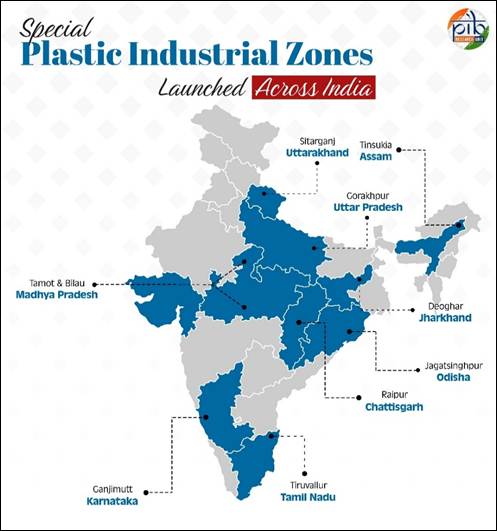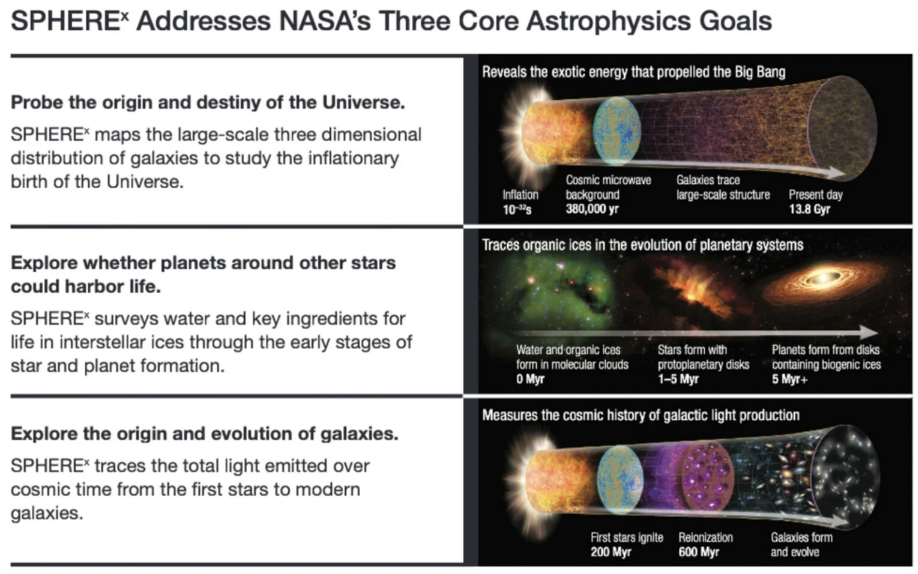Make the World Wear Khadi Campaign

- 01 Mar 2025
In News:
The “Make the World Wear Khadi” campaign is a strategic initiative launched to globalize Khadi, India’s iconic hand-spun fabric, by integrating it with contemporary fashion trends. It is part of the inaugural World Audio Visual & Entertainment Summit (WAVES), scheduled from 1–4 May 2025at theJio World Convention Centre, Mumbai.
Key Highlights:
Organizers
- Advertising Agencies Association of India (AAAI)
- Ministry of Information and Broadcasting, Government of India
Objectives
- Elevate Khadi as a global, aspirational brand.
- Celebrate and modernize India's textile heritage.
- Engage creative professionals in branding and marketing of Khadi through various media.
- Showcase India’s soft power in the global Media & Entertainment (M&E) space.
Campaign Highlights
- Part of the broader Create in India Challenges under WAVES.
- Participants: Open to advertising professionals and freelancers globally.
- Format: Creative entries in digital, print, video, and experiential marketing.
- Total Registrations for Create in India Challenges: 73,000+
- Registrations for Khadi Challenge (as of Feb 15, 2025): 112
Khadi – Key Facts
- What is Khadi?
- A traditional Indian fabric made from hand-spun and hand-woven cotton, silk, or wool.
- Historical Significance:
- Promoted by Mahatma Gandhi during the freedom movement as a symbol of swadeshi, self-reliance, and economic independence.
- Key Characteristics:
- Hand-spun using a charkha (spinning wheel).
- Woven on traditional looms.
- Eco-friendly and sustainable, made from natural fibers.
- Supports rural employment and cottage industries.
WAVES Summit 2025 – Snapshot
- A flagship Media & Entertainment event with a hub-and-spoke model.
- Four thematic pillars:
- Broadcasting & Infotainment
- AVGC-XR (Animation, VFX, Gaming, Comics, Extended Reality)
- Digital Media & Innovation
- Films
- The Khadi campaign falls under the Broadcasting & Infotainment category.
Plastic Parks in India

- 01 Mar 2025
In News:
The Department of Chemicals and Petro-Chemicals is implementing the Scheme for Setting up of Plastic Parks under the umbrella scheme of New Scheme of Petrochemicals, to support setting up need-based Plastic Parks, with requisite state-of-the-art infrastructure, enabling common facilities through cluster development approach, to consolidate the capacities of the domestic downstream plastic processing industry.
What is a Plastic Park?
- A Plastic Park is a dedicated industrial zone for plastic-related industries.
- Aims to synergize capacities of the plastic processing sector and promote investment, production, export, and employment.
- Encourages sustainable development through waste management and recycling.
Plastic Parks Scheme
- Implemented by the Department of Chemicals and Petro-Chemicals under the New Scheme of Petrochemicals.
- Financial Support: 50% of project cost, up to ?40 crore per park.
- Focus: Common infrastructure, cluster development, employment generation, and environmental sustainability.
Plastic Parks Approved (as of April 2025):
Location State Year Approved Grant Sanctioned (? crore) Amount Released (? crore)
Tamot Madhya Pradesh 2013 40.00 36.00
Jagatsinghpur Odisha 2013 40.00 36.00
Tinsukia Assam 2014 40.00 35.73
Bilaua Madhya Pradesh 2018 34.36 30.92
Deoghar Jharkhand 2018 33.67 30.30
Tiruvallur Tamil Nadu 2019 40.00 22.00
Sitarganj Uttarakhand 2020 33.93 30.51
Raipur Chhattisgarh 2021 21.04 11.57
Ganjimutt Karnataka 2022 31.38 6.28
Gorakhpur Uttar Pradesh 2022 34.79 19.13
Objectives
- Boost competitiveness, polymer absorption, and value addition.
- Support R&D-led growth and enhance exports.
- Promote eco-friendly practices like plastic recycling, effluent treatment, and hazardous waste management.
- Encourage cluster-based industrial growth.
Process of Setting up
- States submit proposals → In-principle approval by Scheme Steering Committee → Submission of DPR → Final approval.
- Implementation via Special Purpose Vehicles (SPVs) formed by states.
Other Government Measures
13 Centres of Excellence (CoEs) established at premier institutions (IITs, CSIR labs, CIPET) for:
- Sustainable polymers
- Bio-engineered polymer systems
- Advanced polymeric materials
- Wastewater management in petrochemical industries
Skill Development:
- CIPET offers short- and long-term training in plastic processing technology.
Sustainability Measures
- Extended Producer Responsibility (EPR) mandates recycling targets, use of recycled content.
- Hazardous Waste Management Rules enforce safe disposal practices.
- Ban on certain single-use plastics.
- Promotion of circular economy and biodegradable alternatives.
- Active engagement with WTO, UNEP, ISO for global compliance.
India in Global Plastic Trade
- 12th largest plastic exporter globally (World Bank, 2022).
- Exports increased from USD 8.2 million (2014) to USD 27 million (2022).
Prelims Facts to Remember
- Scheme launched under Department of Chemicals and Petrochemicals.
- Max central grant per park = ?40 crore.
- Plastic Park = cluster-based industrial zone for plastic processing industries.
- Gorakhpur (UP) &Ganjimutt (Karnataka) approved in 2022.
- India is actively integrating sustainability and innovation in the plastic sector.
National Science Day 2025
- 01 Mar 2025
In News:
National Science Day to be celebrated with theme ‘Empowering Indian Youth for Global Leadership in Science & Innovation for Viksit Bharat’.
Key Details:
- Observed On: February 28 annually
- Purpose: To commemorate the discovery of the Raman Effect by Sir C.V. Raman in 1928. The day highlights the importance of science and promotes scientific temper among the public.
- Theme 2025:“Empowering Indian Youth for Global Leadership in Science & Innovation for Viksit Bharat”
- This theme reflects the vision of building a developed India (Viksit Bharat) by nurturing youth-led scientific innovation and aligning with India’s S&T ambitions for 2047.
About Sir C.V. Raman and Raman Effect:
- Born: 7 November 1888, Tiruchirappalli, Tamil Nadu
- Major Contributions:
- Discovered the Raman Effect (1928), for which he received the Nobel Prize in Physics in 1930, becoming the first Asian Nobel Laureate in science.
- Founded: Indian Journal of Physics (1926), Indian Academy of Sciences (1934), Raman Research Institute (1948).
- First Indian Director of IISc, Bangalore (1933).
- Awarded Bharat Ratna in 1954.
Raman Effect:A phenomenon where light passing through a substance changes in wavelength due to interaction with molecular vibrations. This principle is used in Raman Spectroscopy, widely applied in material science, chemistry, forensics, and even nuclear waste analysis.
National Science Day – History & Celebrations:
- Established: 1986 by the Government of India
- First Observed: 1987
- Organisedby:National Council for Science & Technology Communication (NCSTC) under the Department of Science & Technology (DST).
- Celebrations include lectures, open labs, science fairs, and awareness drives across the country, especially for students.
Key Developments in Science & Technology (2024-25):
- Innovation & IP Rankings:
- 39th in Global Innovation Index 2024 (WIPO)
- 6th in Global IP Filings
- Major Initiatives:
- Anusandhan National Research Foundation (ANRF): Boosts R&D and supports innovation in EVs, materials, and emerging technologies.
- National Quantum Mission (NQM): ?6003.65 crore mission to advance quantum computing, communication, and sensing.
- National Supercomputing Mission (NSM):
- Deployed 33 supercomputers, capacity: 32 PetaFlops.
- Target: 77 PetaFlops using indigenous technology.
- Artificial Intelligence:
- BharatGen: India’s first multilingual, multimodal Large Language Model (LLM) for Generative AI.
- STEM Inclusivity:
- Programs like WISE-KIRAN support women in science.
- PM Early Career Research Grant nurtures young researchers.
- INSPIRE continues to attract school and college students to science careers.
- Geospatial & Climate Research:
- Expansion of spatial thinking programs in schools (116 schools across 7 states).
- Establishment of 4 Centres of Excellence for climate risk mapping to enhance disaster preparedness.
Cali Fund
- 01 Mar 2025
In News:
‘Cali Fund’ launched at CBD COP16 in Rome to boost biodiversity finance.
Key Details:
- Launched at: COP16 to the UN Convention on Biological Diversity (CBD), held in Rome in 2025.
- Purpose: The Cali Fund aims to promote the fair and equitable sharing of benefits arising from the use of Digital Sequence Information (DSI) on genetic resources, marking a major step towards fulfilling Goal C and Target 13 of the Kunming-Montreal Global Biodiversity Framework (KMGBF)—which targets halting and reversing biodiversity loss by 2030.
Key Features of the Cali Fund:
- Origin: It builds on the multilateral mechanism adopted during COP15 (2022) and was operationalised at COP16 (2025).
- Objective:Mobilise financial contributions from the private sector to support biodiversity conservation and implementation of National Biodiversity Strategies and Action Plans (NBSAPs).
- Hosted By: Multi-Partner Trust Fund Office (MPTFO).
- Managed By: United Nations Development Programme (UNDP) and United Nations Environment Programme (UNEP).
- Secretariat: Hosted by the Convention on Biological Diversity (CBD).
Funding Mechanism:
- Source of Contributions: Companies commercially utilisingDSI—genetic data from plants, animals, and microorganisms—especially in sectors like:
- Pharmaceuticals
- Cosmetics
- Agriculture and biotechnology
- Industrial biotech and AI-assisted research
- Exemptions: Academic institutions, public research bodies, and entities not reliant on DSI are exempt.
- Allocation:
- 50% of resources are earmarked for indigenous peoples and local communities, especially women and youth, recognising their key role in biodiversity protection.
Significance:
- Global First: First UN biodiversity fund to receive direct contributions from private companies.
- Support for Biodiversity Action Plans: Assists developing countries in implementing their KMGBF targets and NBSAPs.
- Boosts Scientific Research: Enhances capabilities for storing, using, and analysing DSI.
- Promotes Collective Action: Encourages industries benefiting from biodiversity to reinvest in its protection—ushering in a new era of biodiversity finance.
About Digital Sequence Information (DSI):
- Definition: Digitally stored genetic data from DNA, RNA, and proteins.
- Use Cases: Vital for research in health, food security, climate change, conservation, and bioeconomy.
- Governance: Discussed under CBD, WHO PIP Framework, UN Law of the Sea, and others.
NASA’s SPHEREx Telescope

- 01 Mar 2025
In News:
NASA is set to launch the Spectro-Photometer for the History of the Universe, Epoch of Reionization, and Ices Explorer (SPHEREx) aboard a SpaceX Falcon 9 rocket from Vandenberg Space Force Base, California. The telescope is megaphone-shaped, infrared-based, and is designed for a 2-year mission to scan the entire sky in infrared and optical light.
Key Details:
Mission Objectives
- Cosmic Inflation: SPHEREx will investigate the phenomenon of cosmic inflation, the ultra-rapid expansion of the universe that occurred a fraction of a second after the Big Bang (~13.8 billion years ago). By mapping the 3D positions of nearly 450 million galaxies, the mission aims to refine theories about the universe’s earliest moments.
- Spectroscopic Mapping: It will divide light into 96–102 spectral bands, creating a 3D map of the sky. It will collect 8 million spectroscopic images, allowing the study of the composition and distribution of celestial objects on an unprecedented scale.
- Biogenic Molecules Detection: The telescope will identify life-forming (biogenic) molecules like water, carbon dioxide, carbon monoxide, and methanol in cold molecular clouds of the Milky Way. These icy particles are essential for understanding the chemical preconditions for life.
- Cosmic Glow & New Phenomena: SPHEREx will also measure the collective glow from intergalactic space, which could help uncover previously unknown cosmic events and structures.
Comparison with Other Telescopes
Unlike the James Webb Space Telescope (JWST) or the Hubble Space Telescope, which focus on high-resolution, narrow field observations, SPHEREx is designed to scan the entire sky. The full-sky mapping capability makes it a complementary tool for large-scale statistical cosmology.
Significance for Astronomy and Astrobiology
- It provides a comprehensive sky census of galaxies, stars, and asteroids (around 1 billion galaxies, 100 million stars, and 10,000 asteroids).
- By locating regions rich in life-bearing molecules, it enhances our understanding of how life-essential chemistry emerges in the galaxy.
- It lays the groundwork for future targeted studies of exoplanets and habitable environments in space.
